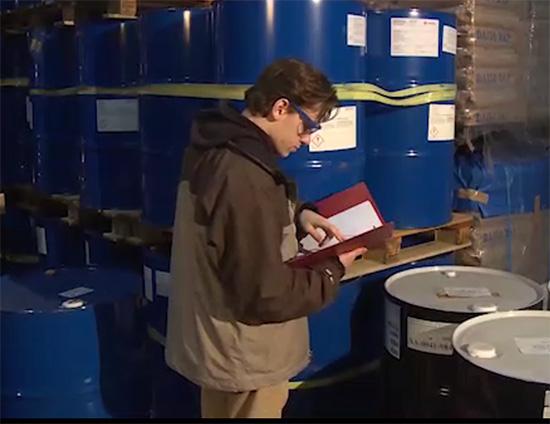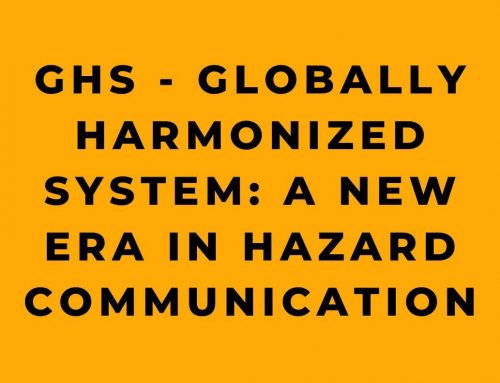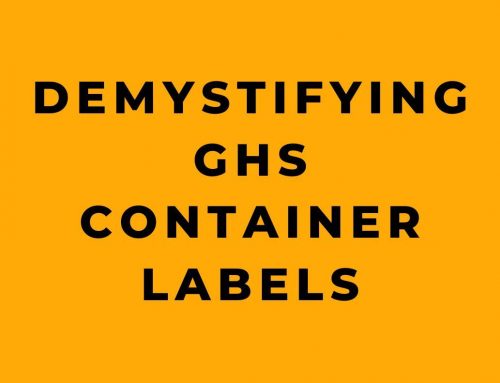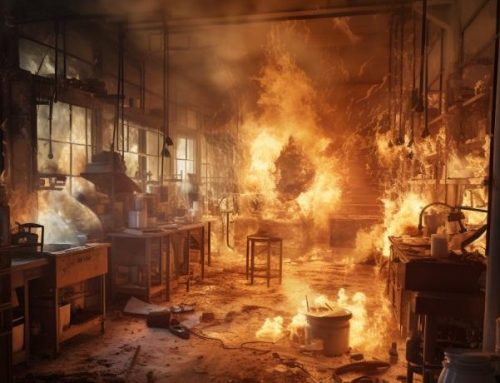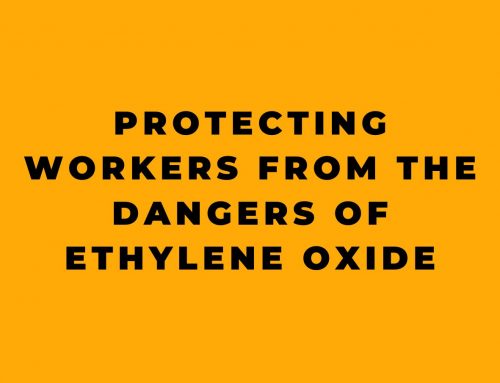Introduction
This article provides an overview of how to handle hazardous materials safely in industrial workplaces, based on key points from an online OSHA training course on hazard communication. Proper handling of hazardous chemicals is critical to protect the health and safety of industrial workers.
What are Hazardous Materials and Why Handle Them Safely?
Hazardous materials, known as HAZMATs, are substances that can pose risks to people, property and the environment if not handled correctly. Many hazardous chemicals are invaluable in industrial facilities for heating, maintaining equipment, and manufacturing processes. But these same chemicals can also cause serious hazards if mishandled.
To ensure worker safety around hazardous chemicals, the Occupational Safety and Health Administration (OSHA) established the Hazard Communication Standard in 1983, also known as the HAZCOM Standard. This law gives workers the “right-to-know” about hazardous materials present in their workplaces and requires employers to provide hazard information and training.
Sources of Hazardous Chemical Safety Information
Under the HAZCOM Standard, employers must provide workers with hazard information from three main sources:
- Safety Data Sheets (SDSs)
- Chemical container labels
- Written Hazard Communication Program
Safety Data Sheets
SDSs are documents provided by chemical manufacturers that detail hazards and safety precautions for every hazardous chemical. The format and content of SDSs follow a UN standard called GHS (Globally Harmonized System). Key facts on an SDS include:
- Chemical names, manufacturer, hazards
- Handling precautions
- First aid instructions
- Spill response procedures
Employers must keep SDSs readily accessible to workers in a central location.
Labels
Chemical container labels enable quick identification of hazards during use. Under HAZCOM, labels on hazardous chemical containers shipped from suppliers must follow the standardized GHS format. For in-plant containers, employers can use their own labeling systems but must still convey all GHS hazard information.
Hazard Communication Program
This written program serves as the facility’s plan for HAZCOM compliance. It lists:
- All on-site hazardous chemicals
- Labeling methods
- SDS locations
- Employee training procedures
- Safe chemical handling practices
In short, the program is the blueprint for safe chemical management.
Understanding Chemical Exposure
Despite rigorous precautions, accidental chemical exposures can still occur in facilities through spills or leaks. The health effects of an exposure depend mainly on two factors:
Dose: The amount of the hazardous substance contacted. More chemical absorbed leads to a more severe health impact.
Duration: The length of contact time with the substance. Long-term exposures tend to cause more pronounced health effects.
Precautions can minimize the dose and duration of an exposure.
Routes of Entry
Chemicals can enter the body through three main routes of entry:
- Skin contact
- Inhalation
- Ingestion
Liquids easily permeate the skin. Dusts, mists and vapors are readily inhaled. Materials on hands or faces can be accidentally ingested. Identifying these potential exposure routes for specific chemicals guides proper use of personal protective equipment.
Exposure Response
If chemical exposure does occur, following proper response procedures quickly is vital to reducing injury severity:
- Flush skin or eyes with water for 15 minutes. Use emergency eyewashes and showers if available.
- Leave contaminated area immediately and get fresh air if breathing problems occur.
- Before attempting vomit after ingestion, consult SDS for proper response. Some chemicals can cause further injury if vomited.
- Report any exposures to supervisors so medical assistance can be provided if needed.
Always check a chemical’s SDS before use to understand first aid and exposure procedures.
Categorizing Hazardous Chemicals
OSHA groups hazardous materials into categories based on associated hazards and precautions. Three common industrial chemical categories are toxins, corrosives and irritants.
Toxins
Toxic substances can cause sickness, organ/tissue damage and even death through interference with normal body processes. Common industrial toxins include:
- Formaldehyde, ethylbenzene, hydrogen sulfide: used in manufacturing processes
- Solvent and pigment components found in paints
- Turpentine: used for paint cleanup
- Respirable crystalline silica: created when abrasive blasting or cutting stone, concrete, masonry
- Asbestos: historically used as insulation and in building materials
Corrosives
Corrosives can severely burn and damage skin, eyes and other contaminated tissues. Industrial corrosive examples are:
- Acids and bases used in chemical processes (nitric acid, sulfuric acid, caustic potash, caustic soda)
- Bleach (sodium hypochlorite)
- Solvent toluene
Irritants
Irritants cause inflammation where contacted. Some industrial irritants:
- Acetone: widely used solvent
- Ethylene oxide: chemical reagent
- Methylene chloride: used as cleaner and degreaser
Exposure to corrosives and irritants may provide an early warning compared to other hazard categories.
Carcinogens
Carcinogens can cause cancer through damage to cells and DNA. Some industrial carcinogens:
- Ethylene oxide, methylene chloride: also classified as irritants
- Respirable crystalline silica: also a toxin
- Asbestos
Industrial chemicals classified as toxins or irritants may also have carcinogenic effects.
Flammables and Combustibles
Flammable and combustible chemicals create fire and explosion hazards. The key difference lies in their flash point, the lowest temperature when released vapors can ignite.
Flammables have flash points below 100°F and can ignite easily under normal conditions. Combustibles have higher 100-200°F flash points and are less prone to ignite.
Typical flammable industrial chemicals:
- Solvents: gasoline, turpentine, toluene
- Gases: hydrogen, propane, acetylene
- Manufacturing ingredients: formaldehyde, ethylene oxide, ethylbenzene, hydrogen sulfide
Common combustibles:
- Fuel oil, grease, other petroleum products
- Paints, adhesives, waxes, polishes containing oils or solvents
Both should be kept away from ignition sources in cool, ventilated, properly grounded storage areas.
Flammable Gases
Flammable gases like hydrogen, propane and acetylene pose unique fire and explosion hazards. They:
- Easily ignite under normal conditions
- Can accumulate undetected and explode
- Displace oxygen in confined spaces, creating suffocation hazard
Proper ventilation, leak detection, explosion-proof electrics and stringent handling procedures are essential.
Oxidizers
Oxidizers like perchloric acid, nitric acid and hydrogen peroxide pose a different danger. They do not burn but accelerate burning of other substances. Oxidizers:
- Increase intensity of fires
- Can cause spontaneous ignition when contacted with some materials
Never store oxidizers near flammables, combustibles or reducing agents.
Safe Chemical Handling Practices
Protecting workers from chemical hazards relies on safe work practices and proper personal protective equipment (PPE).
Personal Protective Equipment
Consult SDSs and your employer’s Hazard Communication Program to determine the right PPE for each chemical handled. General guidelines:
- Skin: Use gloves, aprons, suits – whatever covers exposed skin from contact.
- Eyes: Wear goggles, not just safety glasses, when handling liquids. Add face shield for highly corrosive chemicals.
- Inhalation: Use proper respirator to avoid breathing vapors, dusts, mists.
Proper Chemical Storage
Read SDSs to understand all chemical storage requirements:
- Store flammables/combustibles away from heat and oxidizers.
- Ventilate gases, vapors and fumes.
- Protect light/temperature/moisture-sensitive chemicals.
- Separate incompatible materials that could react.
Emergency Preparedness and Response
Even with stringent precautions, spills and other emergencies can occur when handling hazardous chemicals. Facilities must plan and prepare for such scenarios. Key emergency response procedures:
- Evacuate and isolate affected area.
- Identify substance released and hazards through SDS.
- Provide first aid to exposed/injured individuals.
- Notify internal emergency and management teams.
- Contain spill with socks, barriers and avoid runoff to sewers/storm drains.
- Wear proper PPE during cleanup. Use non-sparking tools for flammable spills.
- Dispose of spill residue as hazardous waste through licensed handler.
Proper training ensures personnel know emergency protocols for each chemical present.
Conclusion
Dangerous chemical exposures can be prevented when workers understand hazards and follow safe practices. OSHA’s Hazard Communication Standard empowers employees through workplace chemical hazard training and right-to-know access to safety data sheets, labels and written programs. Facilities that implement OSHA’s HAZCOM Standard fully protect their personnel, the public and the environment from chemical hazards every day.
Ready to Take Your Chemical Hazard Preparedness to the Next Level?
You’ve now acquired a foundational understanding of hazardous material safety, the importance of OSHA’s Hazard Communication Standard, and the essential role of training and information in protecting your workforce. While this knowledge is invaluable, true preparedness involves practical training that goes beyond the written word. So, what’s the next step in ensuring that you and your team are fully equipped to tackle any HAZMAT incident that comes your way?
Is Your Team Truly Prepared for HAZMAT Incidents? Knowledge is Safety.
You’ve seen the warning labels on containers, and you’ve heard the cautionary tales. You know that hazardous materials pose a real and immediate threat to your work environment. But do you have the practical knowledge needed to turn “right-to-know” into “know-how”?
Elevate Safety with Our Full-Length Interactive Courses on Hazard Communication in Industrial Environments
Our courses don’t just tick the compliance box; they empower you and your team to act confidently and decisively in the face of hazardous situations. They’re interactive, in-depth, and designed for retention.
What You’ll Learn:
- Navigate Information Sources: Gain the skills to find critical data so you can stay ahead of risks.
- Identify and Manage Exposure: Learn to recognize and measure potential hazards, giving you the knowledge to act instead of react.
- Master the Types and Safe Handling: Go beyond the basics. Discover how to safely store and handle different types of hazardous materials.
- React Smartly to Spills: Get a clear, step-by-step action plan for the moments when every second counts.
- Language No Barrier: All courses are available in English and Spanish, ensuring everyone on your team is on the same page.
Act Now: The Next Incident Could Be Just Around the Corner
Every moment you wait is a gamble with safety. This is about creating a culture that values preparation and vigilance. Don’t wait for the next near-miss to take action.
Trusted and Up-to-Date
Rest easy knowing that we keep pace with the latest OSHA regulations. Our courses offer more than compliance; they offer peace of mind.
Click on the link below to learn more about the course and view a free demonstration of the online safety training course:


